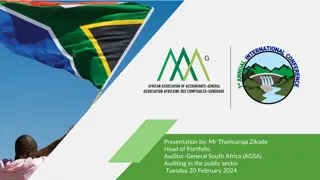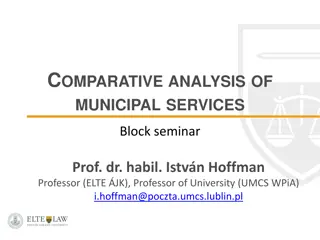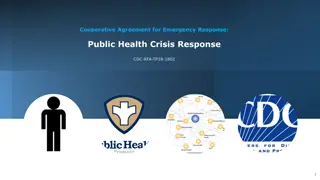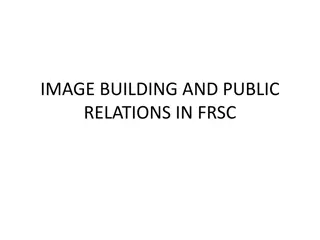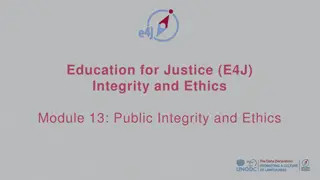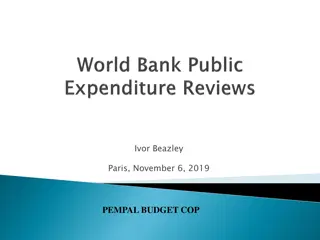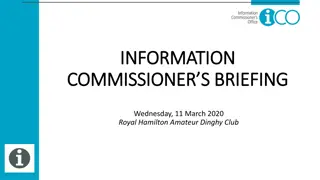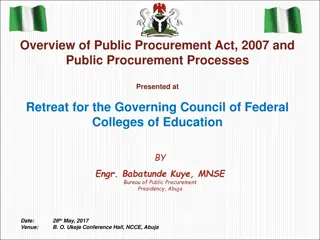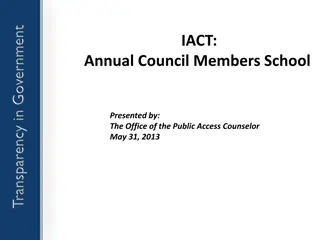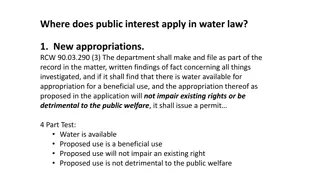
Institutional Design of UN Security Council Resolution 1540
This paper discusses the law, politics, and institutional design of UN Security Council Resolution 1540 in countering nuclear terrorism. It explores the global efforts to secure nuclear materials, combat proliferation, and prevent state-sponsored WMD terrorism. The paper also examines the players and structure involved in implementing the resolution while addressing concerns about technology denial in developing countries.
Download Presentation

Please find below an Image/Link to download the presentation.
The content on the website is provided AS IS for your information and personal use only. It may not be sold, licensed, or shared on other websites without obtaining consent from the author. If you encounter any issues during the download, it is possible that the publisher has removed the file from their server.
You are allowed to download the files provided on this website for personal or commercial use, subject to the condition that they are used lawfully. All files are the property of their respective owners.
The content on the website is provided AS IS for your information and personal use only. It may not be sold, licensed, or shared on other websites without obtaining consent from the author.
E N D
Presentation Transcript
1 A Paper Tiger or a World Free of Nuclear Terrorism? Law, Politics and Institutional Design of the UN Security Council Resolution 1540. Presented by: Sarah Shirazyan SJD, Stanford Law School CSIS, PONI Capstone Conference Offutt Air Force Base, Nebraska
2 The Threat of Nuclear (Radiological) Terrorism Atomic jihad: terrorists seek nuclear materials ISIS ambition to access nuclear materials Black markets in nuclear materials Image courtesy: Reuters Sara K. Schwittek; Swissinfo.ch; Russia Today.
3 UN Security Council Resolution 1540: A Global Counter-Proliferation Instrument Secure nuclear materials Secure nuclear materials State State sponsored sponsored WMD WMD terrorism terrorism domestic measures related to accounting and securing. refrain from supporting non- state actor proliferation Criminalize Criminalize proliferation Border & law enforcement Border & law enforcement nuclear nuclear proliferation Domestic measures to also combat illicit brokering. Adopt and enforce criminal laws and regulations Target illicit trafficking Target illicit trafficking Export Export- -Import Controls Import Controls Monitor WMD production, storage, transport and etc. Establish and enforce export and trans- shipment controls. Present National Present National Compliance Report Compliance Report Image courtesy: United Nations.
4 1540 Institutional Players and Structure The institutional architecture that Security Council has established to advance domestic implementation of 1540 obligations embraces various players whose mandates, priorities and relationship with one another have dramatically evolved overtime. UN Security Council UN Security Council DPA Political Affairs UNODA Disarmament Affairs 1540 Committee Regional Disarmament Offices Group of Experts
5 Collected Evidence : Embedded Case Study Design Content Content Analysis of Analysis of Documents Documents Observations Observations Interviews Interviews Fieldwork Fieldwork How does 1540 implement its mandate as a global counter-proliferation tool? Image courtesy: United Nations.
6 Creative or Radical Use of Security Council s Mandate? States Reactions: North and South Divide Sanctions and Monitoring Cluster Sanctions and Monitoring Cluster Passed under Chapter VII, with only Security Council s fifteen Member States vote, the Resolution mandated treaty-like obligations on all UN members to adopt and enforce effective laws to keep WMDs out of the hands of terrorists. Technology Denial to Technology Denial to Developing Developing Countries Countries A number of states, especially in Non-Aligned Movement, expressed frustration over what they perceived to be a lack of balance between nonproliferation and disarmament in 1540. It was seen as a means of continuing technology denial to developing countries to the advantage of the wealthy industrialized North. Created in 1961, NAM has sought to create an independent path in world politics that would not result in member States becoming pawns in the struggles between the major powers. Source: NTI; Non-Alignment Movement Image courtesy: Blank World Map Cities
7 1. Enforcement and Flexibility: 1540 is a NOT a Sanctions Committee Limited country-centric efforts Strategic Self Restraint Strategic Self Restraint Efforts toward the Global South Lack of legitimacy Engaging in Dialogue, not Engaging in Dialogue, not investigations investigations Trust Lack of capacity Outreach with Global South Outreach and Marketing Outreach and Marketing Activities: Raising Awareness Activities: Raising Awareness Imprecise obligations Considering the controversy sparked by the Resolution and some states resistance towards the Resolution, the Committee was under a political pressure to overcome these sensitivities and generate an enthusiasm towards 1540. It has exercised a reasonable degree of self-restraint in its early days.
8 The Achievements of Res. 1540 in 10 years. Unprecedented Political Consensus. The 2014 marked the 10th anniversary of the adoption of Res. 1540. Much has been accomplished for the past 10 years. Given States early apprehensions over Security Council s reference to its Chapter VII powers in the adoption of UNSCR 1540, the high level of reporting is indeed remarkable. Some suggest that it serves as a metric to indicate an amplified worldwide commitment to UNSCR 1540 goals 176 183 57 outreach events in 2015 B D National Reports approved Matrices 23 National Action Plans 145 average domestic measure A C E [W]hat was once seen as interference by the Security Council in domestic matters was now viewed as coming together of states for a common cause. The issues of the resolution s legitimacy, which represented an early challenge to effective implementation, no longer existed. Costa Rican Ambassador Jorge Urbina, 1540 Committee Chair, 1540 Comprehensive Review, 2011
9 The Achievements of 1540 as a Global Non- Proliferation Regime The South African Case Peer Review Process The Caribbean Case The dual-use nature of the Resolution The role of Regional Coordinator National/Local Interests The Local Ownership Reputational Costs The Role of Regional Organizations Inter-Agency Dialogue Regional Champions Lessons learnt from Croatia and Poland The entrepreneur is commonly seen as an innovator a generator of new ideas and business processes. Country Visits Developing National Action Plans Responding to local priorities and needs
10 2. The Cost of the Flexible Mandate The voluntary nature of Committee s work has created unprecedented political consensus for the Resolution, but it affects the quality of domestic implementation. The Committee s assistant-building mechanism has not been used very well to facilitate targeted technical assistance. The consensus-based setup of the Committee does not enable the 1540 Experts to conduct critical analysis of national reports or carry threat assessments and country profiling. Country Reports on implementation are false metric of Resolution s success. Roadblocks Roadblocks Threat Assesment Evolution of 1540 Valuntary Trust Fund Managment Universal Reporting Assistance Image courtesy: The Institute of Risk Management; BBC News Syrian Conflict; Investopedia.
11 3. Towards Effective Global Non-Proliferation Regime Reengineer the Group of Experts and their Work. Establish long-lasting Private-Public Partnership. Use academic institutions and organize policy labs to identify strategic gaps, organize knowledge around 1540 implementation and create user-friendly 1540 best-practices digest. Map Actors and Resources: Use technology to create a network Prioritize regions & issue-areas: use empirical analysis to organize outreach wisely. Prioritize regional organizations and establish sustainable partnerships. Addressing development proliferation divide. The US s role in advancing 1540 s global role and domestic implementation.
12 Thank You!

